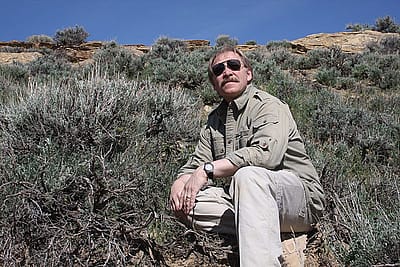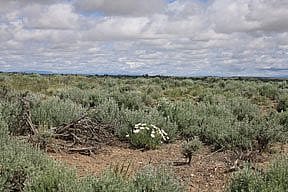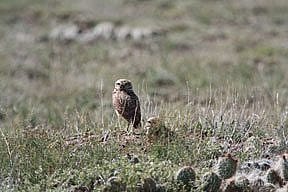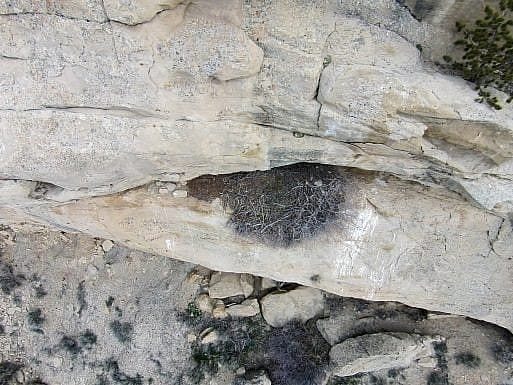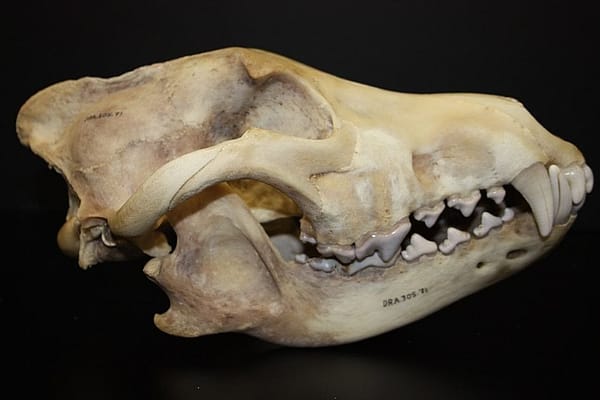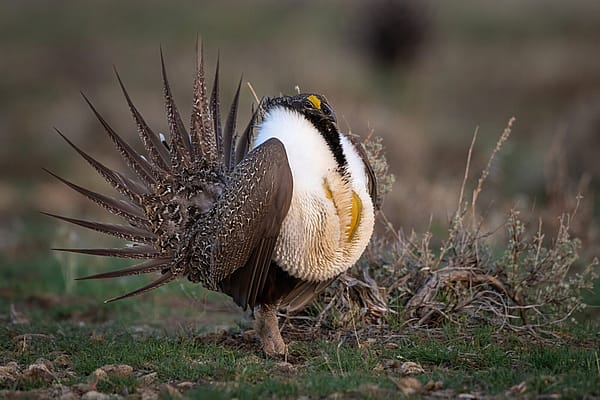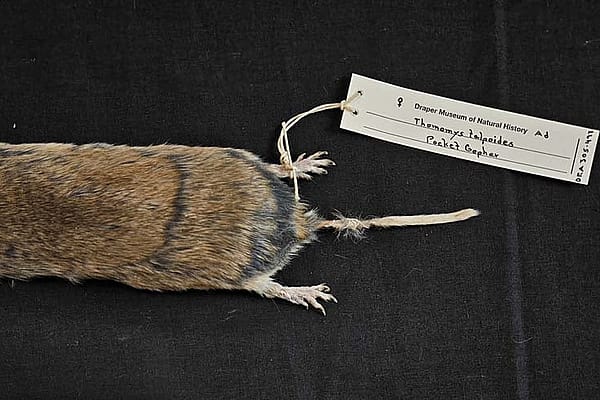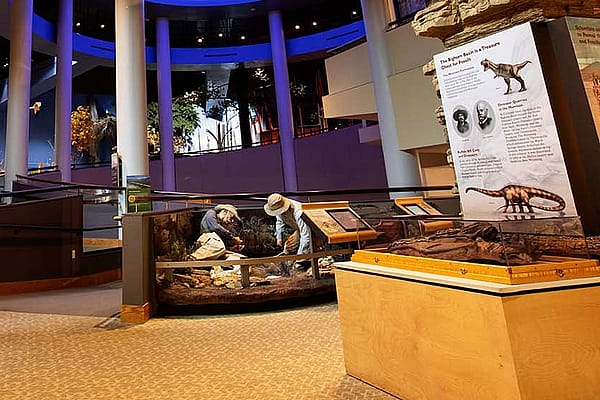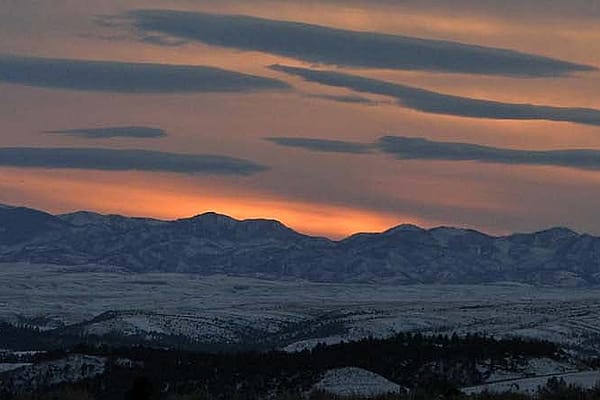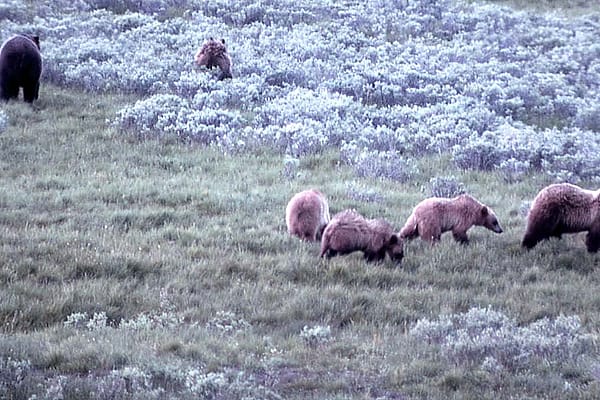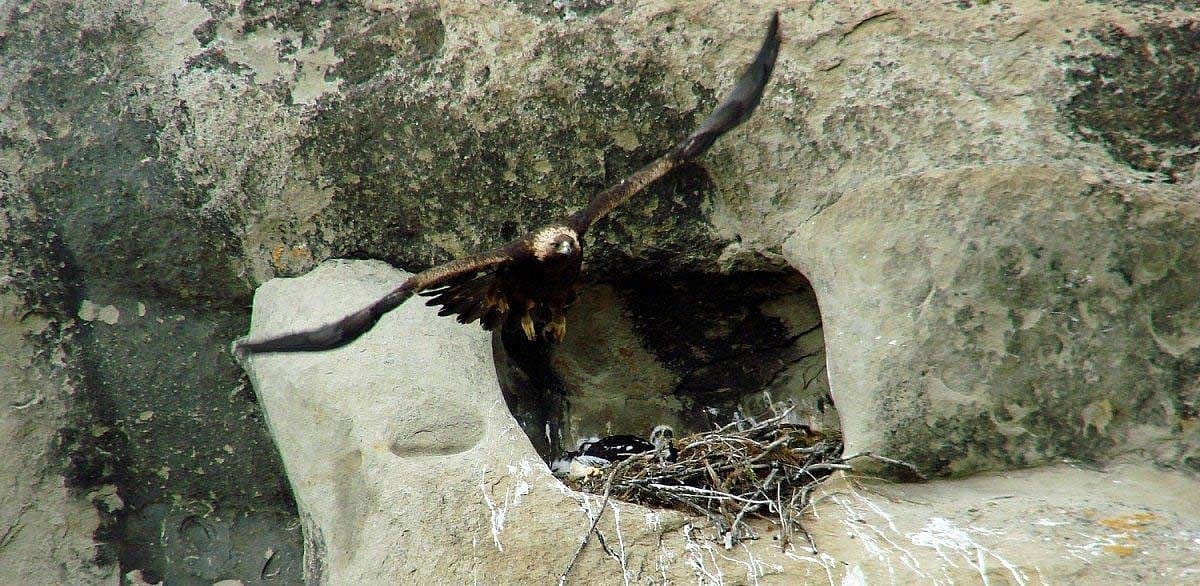
Golden Eagle Journal: 2011
10 June, 2011: First entry in the 2011 Golden Eagle Journal…Headed out into Bighorn Basin to check on a few eagle nests and follow up a lead on a Burrowing Owl nest I’d heard about. Finally a good day for fieldwork, with temperatures in the 60s F, and relatively calm winds. High clouds, but mostly sunny today. I’ve never seen the Bighorn Basin so green this time of year…or any time of year, for that matter. Daisies, Indian Paintbrush, and Scarlet Globemallow beginning to bloom, but no sign of Larkspur yet.
My first stop was along the two-track where the Burrowing Owl was reported. Roads still a bit muddy! Wow, it was worth coming out here, though. I spotted the owl near her burrow—no other owls around, and no prairie dogs visible. This was an active prairie dog colony two years ago, but apparently inactive now—I wonder if sylvatic plague hit this colony? Several pronghorn around. One doe approached me, and I suspect that she had a newly born fawn nearby. I backed away after snapping a couple of quick photos with my 500 mm lens.
I was able to visit four Golden Eagle nest sites and confirm that three of them are inactive this year. The fourth nest has a nestling that is about 40 – 45 days old! Overall, it appears that only about 16 of our nest areas are active this year, compared with 30 each in 2009 and 2010. We’re exploring the possibility that cottontail populations have declined this year. It will be interesting to see if the eagles that are nesting this year are including more species in their diet, instead of the greater than 90 percent cottontails we’ve seen the last couple of years. Our Golden Eagle Posse members are monitoring several active nests.
The West Zone Team of Rosemarie Hughes, Anne Hay, Richard Gruber, John Ross, and Don Chaffey filed this report along with a beautiful photograph from nest 43 taken by Anne Hay last week:
“It was a little quieter this week than last. One constant though was the nestling is sure talkative. It was very boisterous the first day we were out and little more subdued the second day, even though when an adult was close by it would let us know. The eaglet is getting darker every time we see it. It is losing its fluffy white down and you can see it in the nest, especially when the wind is blowing, which it did Thursday, 2 June. We estimate age at 30 – 35 days by seeing more feathers emerging from its sheaths. The cere and feet are getting lemony in color as well. We still see the little fluffy head peer from around the pine boughs that are still being brought into the nest. We haven’t seen the adult bring any prey to the nest. It comes in, checks on things, then leaves, spending less than one minute at the nest.
It was so windy on the 2nd of June it was hard to keep the scopes still. There was a lot of ‘floating’ on the thermals activity too. A couple of times an adult would ‘float’ right by the nest, then land. One adult landed in the nest, followed immediately by the other, who arrived with vocalization, causing the other to flee. The second adult appeared to be larger, so it appears it was the female, who caused the male to leave. The chick appears to be quite hungry. The crop is very flat. We did see them soaring around the nest, checking it out, a few times today. No pine bough or prey was delivered to the nest though. There was no self-feeding either visit this week and we didn’t see the chick being fed. Compared to last week, this was a very quiet week, except for the chirping nestling.”
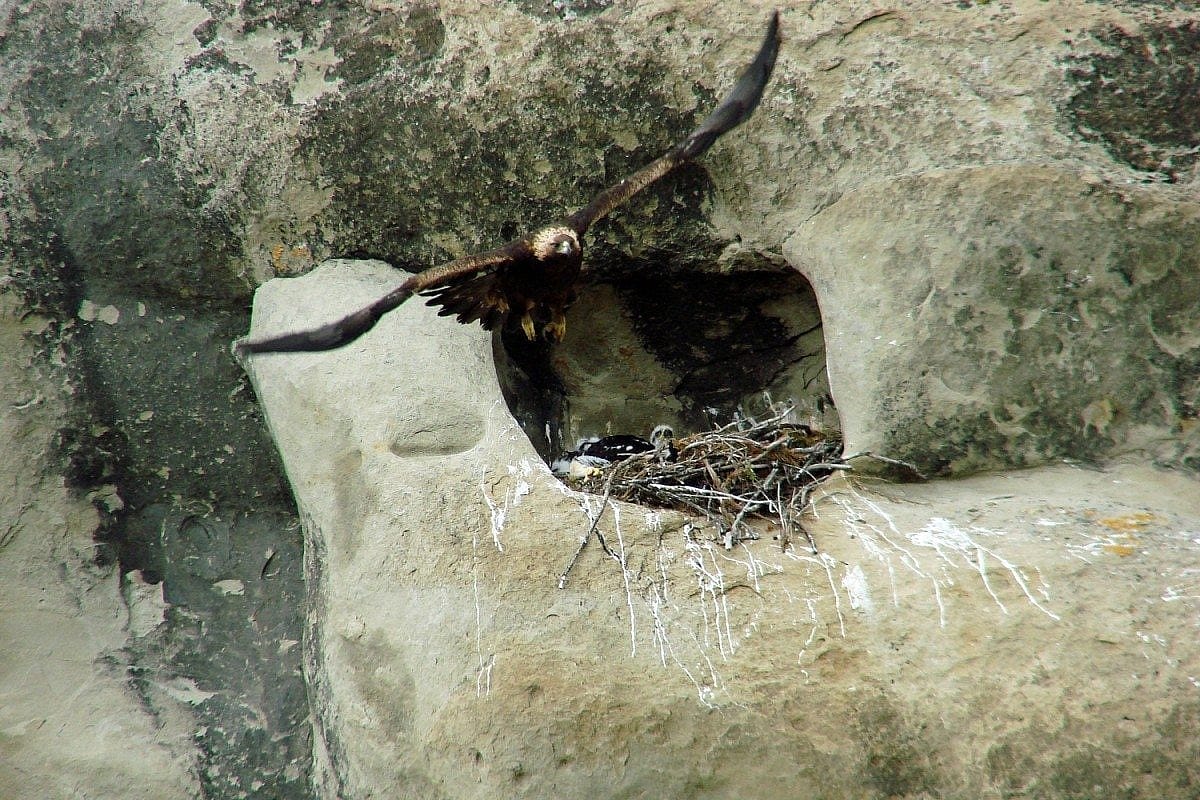
I’m looking forward to getting back out into the field next week and receiving weekly reports from our Posse teams. I hope the roads dry out a bit—we expect our first eaglets to leave the nest in the next 7 – 10 days. C.R. Preston
Written By
Charles Preston
Dr. Charles Preston served as Senior Curator at the Center of the West and Founding Curator-in Charge of its Draper Natural History Museum and Greater Yellowstone Raptor Experience. He is now Senior Scientist and Curator Emeritus of the Draper Museum.
